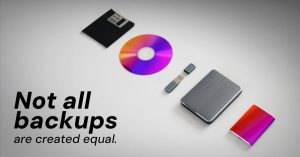If you are a developer, then you most likely hear a great deal about new advances and technology that guarantee to speed up the software development process, just as ones that will build your applications’ versatility whenever you have sent them. Your test is to swim through these rising advances and figure out which ones really hold guarantee for the tasks you are now chipping away at.
Almost certainly, you know that distributed computing offers an extraordinary guarantee for engineers. Notwithstanding, you probably won’t think about the regions where this innovation can provide some benefit for your ventures, as well as you. You likewise probably won’t realise excellent practices to utilise while actualising a task in the cloud.
Take out some time to read this article because it investigates different types of secure application deployment frameworks accessible and furnishes rules that can assist you with certifiable application arrangements on top of a cloud foundation.
Pick between IaaS, SaaS , and PaaS
At the point when individuals start examining distributed computing, people are for the most part talking about three potential choices for deploying software- SaaS, PaaS, and IaaS. Which one should you go for and will be appropriate for your undertaking relies upon your particular requirements for the code base, which is required to work with. Your task is to get to know about these three cloud choices in detail before picking one.
IAAS
IaaS, otherwise known as infrastructure as a service is a stage where a framework is accommodated to the developer. With a tick of a catch, the developer can turn up virtual machines facilitated by a supplier with your decision’s working arrangement. The seller giving the device is capable of the availability and starting provisioning of the framework, and the developer is liable for all the other things. The seller will offer a machine and a working framework, however, you need to introduce the entirety of the product packages, application server| runtimes, and data set, which will be required by your applications. By and large, IaaS necessitates that you have a framework administrator to deal with the framework and apply security errata, patches, and firewall rules on a regular basis.
Advantage: You have unlimited oversight over each part of the framework.
Disadvantage: You need framework organisation information or a group of framework administrators to keep up the frameworks because you are liable for their security, as well as uptime.
PaaS
Platform as a service is a genuine innovation stack that sudden spikes in demand for top of IaaS. With PaaS, or platform as a service, everything is given aside from the users, application code, and information. Commonly, when utilising a PaaS, the merchant keeps up the information bases, application server, and the entirety of the essential working framework parts. This way, you will be focusing completely on the code’s application. Because the seller deals with that platform, it is frequently challenging and not entirely easy to open up the ports if they are not explicitly required for the application server, runtime, or information base being used. PaaS additionally gives that is explicitly implied for applications, which includes the capacity to enhance the application level up depending on the application’s client interest. In many stages, this occurs with practically no communication from the engineer.
Advantage: PaaS gives a total environment, which will be managed actively, and lets you focus completely on the application code.
Disadvantage: Developers are regularly limited to certain minor or major forms of packages accessible on the framework so the seller can deal with the stage successfully.
SaaS
With software as a service, everything is given to you aside from the application data and users. The application code will be handed over to the developer by the vendor, along with that the developer has a restricted admittance to change the software being used. This is not a common choice for deploying applications that are costumed because the seller gives the whole programming stack. Two examples of software as a service getting used would be automation software and hosted sales.
Advantage: The merchant gives the whole stack aside from the application clients and the related information.
Disadvantage: You have restricted command over the facilitated application, and it’s frequently challenging to incorporate outer work processes into the framework.
Which would it be a good idea for you to pick?
Since you will be working as an application developer, we will suggest going ahead with PaaS because the framework will be managed by someone else for you and all you will have to do is put your focus on the application code.
Enhance your application
If you ask us, we would say that it is better to go with Paas because it allows you to enhance your application. In any case, as a developer, you should know about the sorts of scaling accessible and at what time it bodes well proportional evenly or vertically.
- Vertical scaling
Vertical scaling alludes to a scaling, which has been set as a default for a long time. This sort of scaling alludes to the idea that you basically utilise bigger frameworks to deal with the load. This is one reason why servers are set up today with a terabyte of RAM and a multiple number of centres and CPUs to serve a solitary Java® application. If vertical scaling is being used, a single huge framework is utilised to deal with most or the entirety of the clients’ application demands.
- Even scaling
When it comes to even scaling, things will work a bit differently. The application demands and loads will be handed out to a team or group of more modest servers who are working as a load server. As a client solicitation is prepared, the load balancer will send out the solicitation to a server. Afterwards deals with the meeting state across the bunch of servers. The two kinds of even scaling are: Automatic and manual scaling.
- Manual scaling
If you choose manual scaling, then it determines that you need the application to get enhanced to deal with expanded traffic. This happens more often than when you identify that an event is coming up and huge amount of traffic is expected. For instance, you should proactively add extra servers to your bunch on the off chance that you acknowledge that you will be running an advertising effort to draw in more clients to your application. Most PaaS suppliers permit you to achieve this undertaking with a basic order.
- Programmed scaling
However with automated scaling, you will not have to do anything manually. You will specify and clear your conditions beforehand, and accordingly the application will scale. When we say condition, they can be things like- HTTP demands your application is getting, or the measure of the CPU utilized by your application. This empowers the developer to consequently add new server to the heap balancer in case there is a huge application’s demand. Programmed scaling gives a genuinely distant way to deal with scaling while at the same time guaranteeing that request from the clients is also getting met in a suitable style. Programmed scaling is pivotal for you if you know that you have unplanned application use.
Contact Intuition Consultancies for Secure Application Deployment
If you want to know more about secure application development, or you want us to develop a secure application for your products and service that will help you to enhance your service, get in touch with Secure application deployment today.






